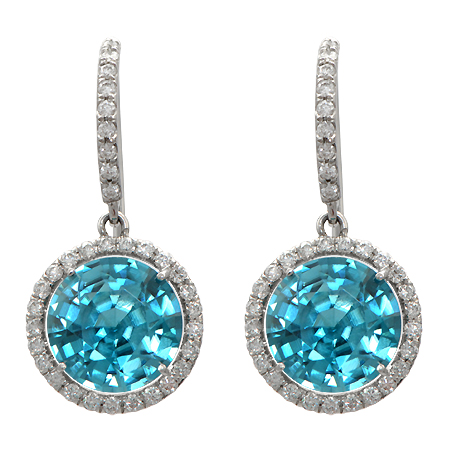Gemstone Buyer's Guide
Alexandrite
June Birthstone and 55th Anniversary
Alexandrite, along with pearl, is the gemstone for the month of June. Alexandrite is a rare chrysoberyl variety with chameleon- like qualities. Its color is a lovely green in daylight or fluorescent light, and changes to brownish or purplish red in the incandescent light from a lamp or candle flame. Alexandrite’s dramatic color change is sometimes described as “emerald by day, ruby by night.” Other gems also change color in response to a change in light source, but this gem’s transformation is so striking that the phenomenon itself is often called “the alexandrite effect.”Abundant alexandrite deposits were first discovered in 1830 in Russia’s Ural Mountains. Those first alexandrites were of very fine quality, and displayed vivid hues and dramatic color changes. The gem was named after the young Czar Alexander II, and it caught the country’s attention because its red and green colors mirrored the Imperial Russian flag. Today, most alexandrite deposits are found in Sri Lanka, East Africa, and Brazil. Because of its scarcity, especially in larger sizes and finer qualities, alexandrite is a relatively expensive member of the chrysoberyl family.
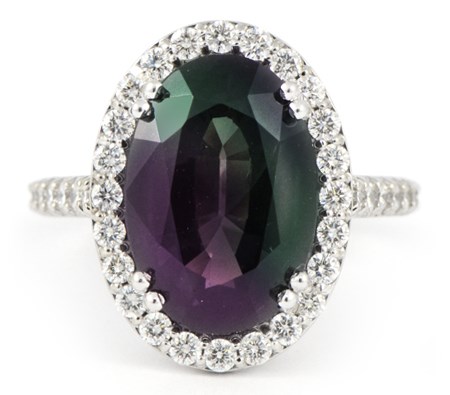
Amethyst
February Birthstone, 6th Anniversary
Amethyst, the gemstone believed by ancient Greeks and Romans to ward off the intoxicating powers of Bacchus, also is said to keep the wearer clear-headed and quick-witted. Throughout history, the gemstone has been associated with many myths, legends, religions, and numerous cultures. English regalia were even decorated with amethysts during the Middle Ages to symbolize royalty. It has been associated with many myths, legends, religions, and numerous cultures. Amethyst is purple quartz, a beautiful blend of violet and red that can found in every corner of the earth. Historically, the finest amethysts were found in Russia and were featured in much royal European jewelry. It’s origins are Brazil, Uruguay, Zambia, India, Sri Lanka, United States and Russia. Almost all amethyst is heated to bring out its best color. Heat-treated amethyst is very stable and requires no special handling. Protect from sharp blows and scratches. Can be cleaned with most commercial jewelry cleaners or mild soap and lukewarm water using a soft brush. Rinse and dry thoroughly after cleaning. May fade if exposed to sunlight for long periods of time. Shouldn’t be worn while sunbathing or when using a tanning bed.
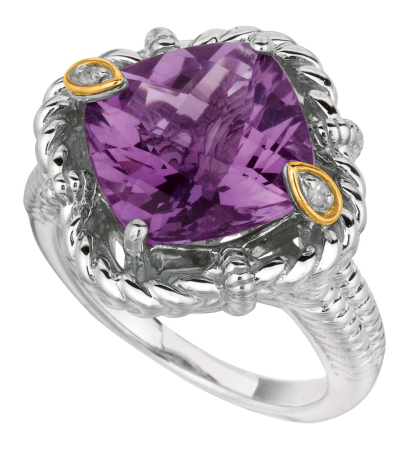
Aquamarine
March Birthstone, 19th Anniversary
The name aquamarine is derived from the Latin word aqua, meaning water, and marina, meaning the sea. This gemstone was believed to protect sailors, as well as to guarantee a safe voyage. The serene color of aquamarine is said to cool the temper, allowing the wearer to remain calm and levelheaded. Its pale, cool color beautifully complements spring and summer wardrobes. Aquamarine is most often light in tone and ranges from greenish blue to blue-green; the color usually is more intense in larger stones. It’s origins are in Brazil, Zambia, Nigeria, Madagascar, Pakistan and Mozambique. Virtually all aquamarine is heated to minimize the greenish component of its color, making it appear a purer blue. Aquamarine should never be cleaned with a steam cleaner or an ultrasonic cleaning machine. Can be cleaned with most any commercial jewelry cleaner or mild soap and lukewarm water using a soft brush. Rinse and dry thoroughly after cleaning.
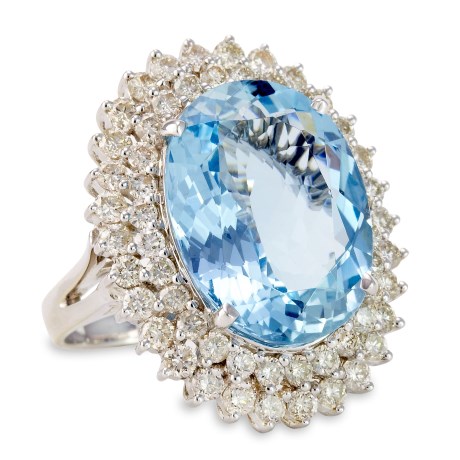
Citrine
November Birthstone, 13th Anniversary
Citrine, the other birthstone for November is known as the "healing quartz". This golden gemstone is said to support vitality and health while encouraging and guiding hope, energy and warmth within the wearer. Citrine can be found in a variety of shades ranging from pastel yellow to dark brownish orange. It is one of the most affordable of gemstones and plentiful in nature. Citrine is found most frequently in Brazil, Bolivia, and Spain. Brownish varieties are commonly heated and magically turn into the bright yellow or orange colors known as citrine. This enhancement method is permanent and will last for the life of the gemstones.
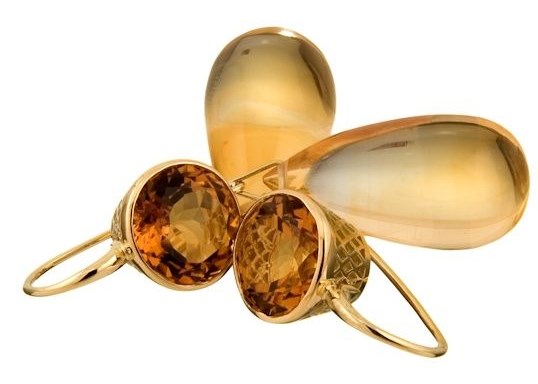
Diamond
April Birthstone, 10th and 60th Anniversary
Fancy-color diamonds are natural, rare and truly exotic gems of the earth. Diamonds in hues of yellow, red, pink, blue, and green range in intensity from faint to vivid and generally the more saturated the color, the higher the value. Diamonds sparkling with intense color are rare and may be priced higher than a colorless diamond of equal size. Because fancy-color diamonds are very desirable, color is sometimes introduced in a laboratory. These are correctly called color-treated diamonds. When purchasing a fancy-color diamond, the shopper should ask if any enhancements or treatments were used to improve its color and/or clarity.
Learn more about diamonds here.

Emerald
May Birthstone, 20th and 35th Anniversary
The emerald, a symbol of rebirth, is believed to grant the owner foresight, good fortune, and youth. Emerald, derived from the word smaragdus, meaning green in Greek, was mined in Egypt as early as 330 B.C. The availability of high-quality emerald is limited; consequently, treatments to improve clarity are performed regularly. It’s orgins are in Colombia, Brazil, Afghanistan and Zambia. Almost all are routinely enhanced to improve their appearance. Both natural and manmade fillers are commonly introduced into the fissures in emeralds to reduce their visibility. These types of enhancements are not considered stable, as fillers will come out over time or when exposed to high heat. Emeralds are susceptible to sharp blows and sudden temperature changes. Never clean with an ultrasonic cleaning machine or a steam cleaner. Should not clean with strong detergents or most commercial jewelry cleaners. The safest and best way is with lukewarm water, a very mild soap and a soft brush. Rinse and dry thoroughly after cleaning.
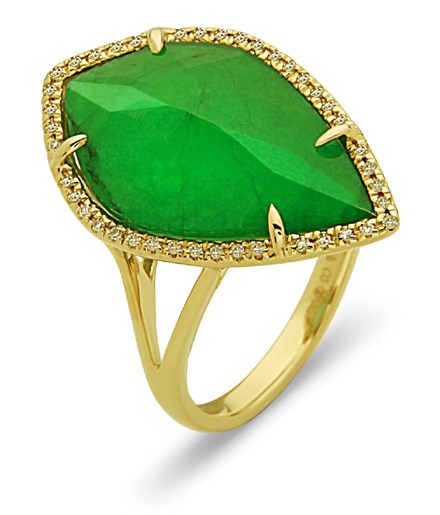
Garnet
January Birthstone, 2nd Anniversary
Signifies eternal friendship and trust and is the perfect gift for a friend. Garnet, derived from the word granatum, means seed, and is called so because of the gemstone's resemblance to a pomegranate seed. References to the gemstone dates back to 3100 B.C., when the Egyptians used garnets as inlays jewelry. Garnet is the name of a group of minerals that comes in a rainbow of colors, from the deep red of the pyrope garnet to the vibrant green of tsavorites. It’s orgins are in Africa, Australia, Brazil, India, Madagascar, Russia, Sri Lanka and the United States. There are no treatments commonly used to enhance garnet. Garnet can be cleaned using an ultrasonic cleaning machine, any commercial jewelry cleaner or mild soap and lukewarm water using a soft brush. Be sure to rinse and dry your jewelry thoroughly after cleaning.
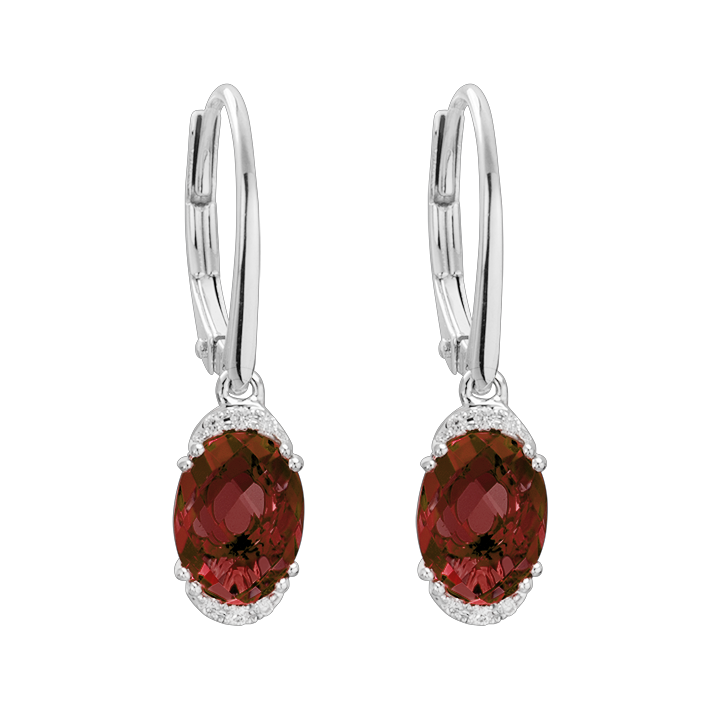
Jade
12th Anniversary
Jade refers, actually, to two chemically different stones: jadeite, a pyroxene or a silica-bearing mineral, and nephrite, an amphibole, or a ferro-magnesium silicate. Although different, they share many common characteristics. The Chinese were aware of the difference by the mid-1700's while, in Europe, the technical differences were first published in 1863. We regard both forms simply as "jade."
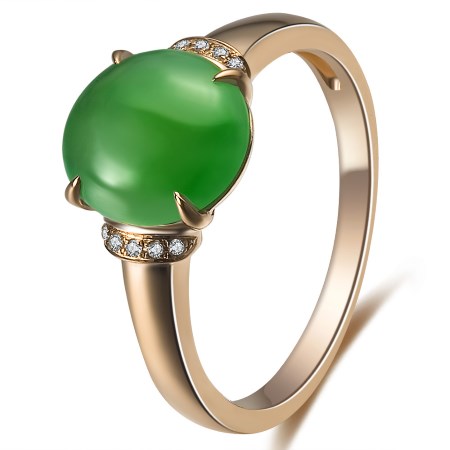
Moonstone
June Birthstone
The ancient Romans theorized that moonstone, with its unearthly shimmer, was formed from frozen moonlight. This appealing gem variety does shine with a cool lunar light but it is the mineral feldspar, quite terrestrial in origin. The shimmer, which is called schiller or adularescence, is caused by the intergrowth of two different types of feldspar, with different refractive indexes. Moonstones come in a variety of colors. The body color can range from colorless to gray, brown, yellow, green, or pink. The clarity ranges from transparent to translucent. The best moonstone has a blue sheen, perfect clarity, and a colorless body color. Another related feldspar variety is known as rainbow moonstone. In this variety, the sheen is a variety of rainbow hues, from pink to yellow, to peach, purple, and blue. Fine moonstone is quite rare and becoming rarer. It is mined in Sri Lanka and Southern India. The rainbow variety can be found in India and Madagascar. Moonstones are usually cut in a smooth-domed oval cabochon shape to maximize the effect. Sometimes they are carved to show a man-in-the-moon face. Moonstone should not be store in contact with your other gemstones to prevent scratching. Clean with mild dish soap: use a toothbrush to scrub behind the stone where dust can collect.

Opal
October Birthstone, 14th Anniversary
The name opal derives from the Greek Opallos, meaning "to see a change (of color)." Opals range in color from milky white to black with flashes of yellow, orange, green, red, and blue. An opal's beauty is the product of contrast between its color play and its background. Opal is a formation of non-crystalline silica gel that seeped into crevices in the sedimentary strata. Through time and nature's heating and molding processes, the gel hardened into the form of opals. The opal is composed of particles closely packed in spherical arrangements. When packed together in a regular pattern, a three-dimensional array of spaces are created that give opal its radiance. Most of the world’s opals come from the deserts of Australia. Other important sources include Mexico and the United States. There are various treatments used to enhance the beauty of opals. The most common treatments darken the body color, making the play of color slightly more noticeable. Some opals are coated with oil, wax or plastic to improve their appearance. All of these treatments only affect a thin outer layer of the gem’s surface and, therefore, are not considered stable.
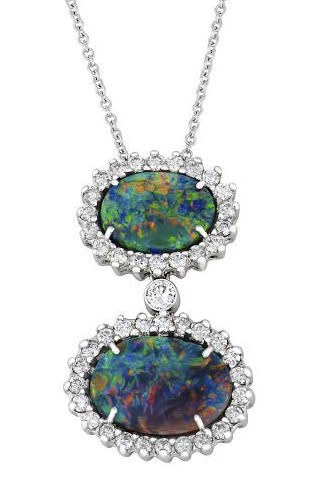
Pearl
June Birthstone, 3rd and 30th Anniversary
Historically, pearls have been used as an adornment for centuries. They were one of the favorite gem materials of the Roman Empire; later in Tudor England, the 1500s were known as the pearl age. Pearls are unique as they are the only gems from living sea creatures and require no faceting or polishing to reveal their natural beauty. In the early 1900s, the first successful commercial culturing of round saltwater pearls began. Since the 1920s, cultured pearls have almost completely replaced natural pearls in the market.
Learn more about pearls here.

Peridot
August Birthstone, 1st and 16th Anniversary
Peridot is said to host magical powers and healing properties to protect against nightmares and to bring the wearer power, influence, and a wonderful year. As Peridot is a gemstone that forms deep inside the Earth and brought to the surface by volcanoes, in Hawaii, Peridot symbolizes the tears of Pele, the goddess of fire and volcanoes. Today, most of the Peridot supply comes from Arizona; other sources are China, Myanmar, and Pakistan. This gemstone comes in several color variations ranging from yellowish green to brown, but most consumers are attracted to the bright lime greens and olive greens. Peridot, in smaller sizes, often is used in beaded necklaces and bracelets. Peridot in limited quantities has been found in Italy, the Hawaiian Islands, Myanmar, San Carlos Native American Reservation in Arizona, China, Brazil and Pakistan. Peridot does not react well to heat. Avoid sudden temperature changes. Peridot should never be cleaned with a steam cleaner or an ultrasonic cleaning machine. Peridot can be cleaned with most any commercial jewelry cleaner or mild soap and lukewarm water using a soft brush. Be sure to rinse and dry your jewelry thoroughly after cleaning.
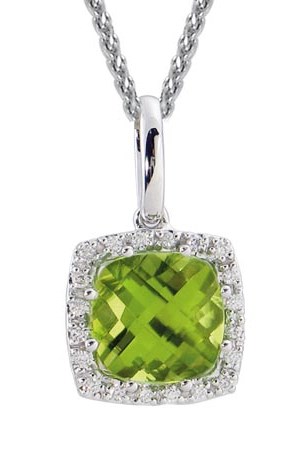
Ruby
July Birthstone, 15th and 40th Anniversary
There’s no better way to demonstrate your love than by giving a ruby in celebration of a July birthday. Rubies arouse the senses, stir the imagination, and are said to guarantee health, wisdom, wealth and success in love. Ruby is a variety of the gems species corundum. It is harder than any natural gemstone except diamond, which means a ruby is durable enough for everyday wear. Fine-quality ruby is extremely rare, and the color of the gem is most important to its value. The most prized color is a medium or medium dark vivid red or slightly purplish red. If the gem is too light or has too much purple or orange, it will be called a fancy-color sapphire. Its origins include Myanmar, Kenya, Pakistan, Sri Lanka, Tanzania, Thailand and Vietnam. Ruby is routinely heat treated to improve its appearance. Heat enhanced rubies are extremely stable. Rubies are both a hard and durable and can by cleaned using an ultrasonic cleaning machine, any commercial jewelry cleaner or mild soap and lukewarm water using a soft brush. Rubies with a glasslike residue in surface-reaching fractures should not be cleaned with an ultrasonic or steam machine. Be sure to rinse and dry your jewelry thoroughly after cleaning.
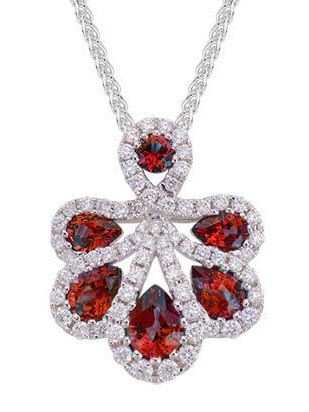
Sapphire
September Birthstone, 5th and 45th Anniversary
Sapphire, the September birthstone, has been popular since the Middle Ages and, according to folklore, will protect your loved ones from envy and harm. Medieval clergy wore sapphires to symbolize heaven, while commoners thought the gem attracted heavenly blessings. Blue sapphires range from very light to very dark greenish or violetish blue, as well as various shades of pure blue. The most prized colors are a medium to medium dark blue or slightly violetish blue. Sapphire is a variety of the gem species corundum and occurs in all colors of the rainbow. Pink, purple, green, orange, or yellow corundum are known by their color (pink sapphire, green sapphire). Its origins are in India, Australia, Myanmar, Sri Lanka, Thailand and the United States. Almost all sapphire on the market today has been heat treated to improve its appearance. Heat-enhanced sapphire is very stable. Sapphire is hard and durable. Sapphires can be cleaned using an ultrasonic cleaning machine, any commercial jewelry cleaner or mild soap and lukewarm water using a soft brush. Be sure to rinse and dry your jewelry thoroughly after cleaning.
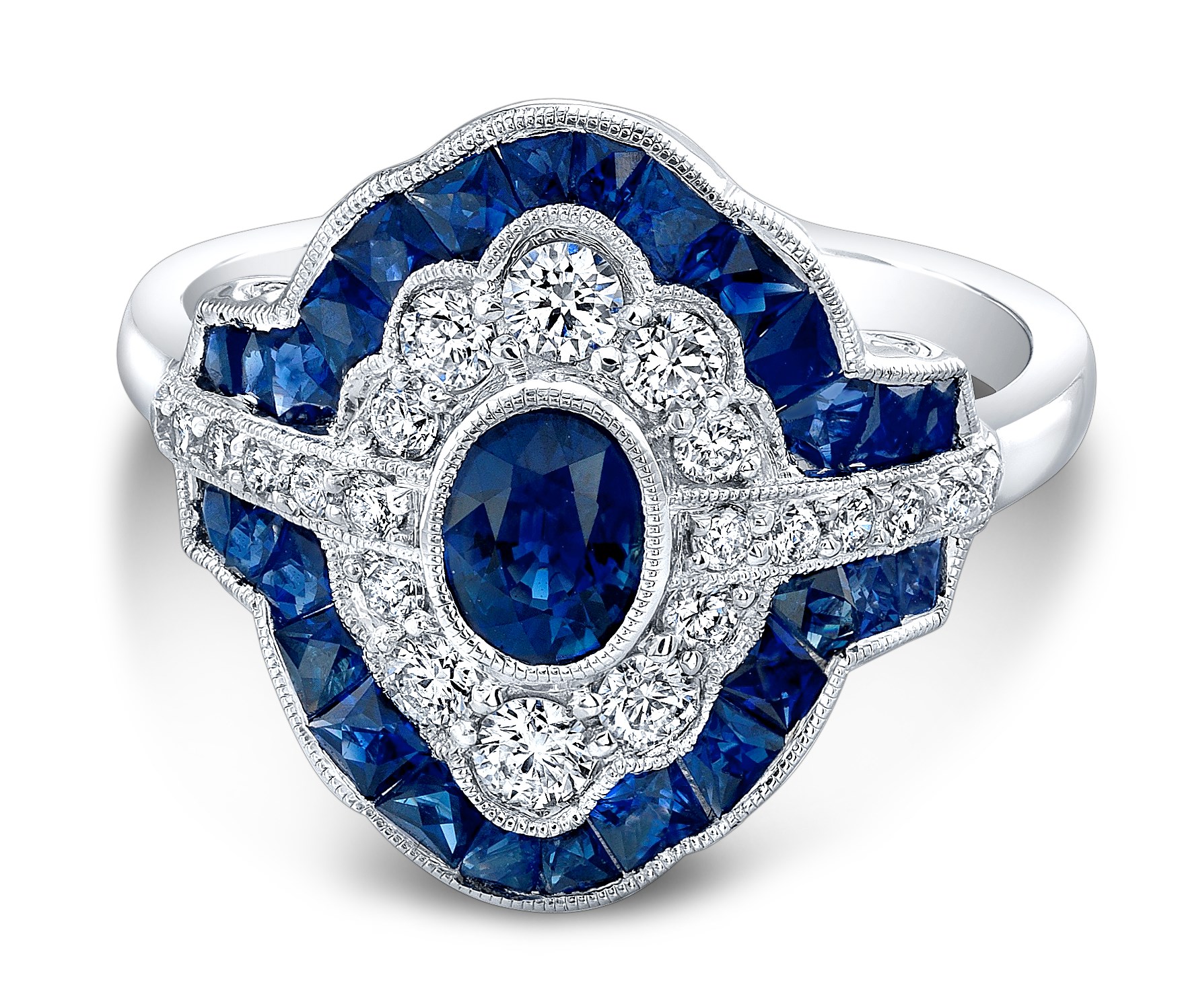
Tanzanite
December Birthstone, 24th Anniversary
Discovered in the late 1960s in Tanzania, and found exclusively in this tiny area of the world, tanzanite exhibits a rich violet-blue color for which the gemstone is treasured; often it is heat-treated to achieve this color. Colors range from blue to purple, and tanzanites that are medium dark in tone, vivid in saturation, and slightly violet blue command premium prices. As tanzanite can be less expensive than sapphire, it often was purchased as an alternative. However, it has increased in popularity and now is valued more for its own beauty and brilliance than as a sapphire substitute. Tanzanite is mined in only one location in the world, the Merelani Hills of Tanzania, in eastern Africa. Virtually all tanzanite is gently heated to bring out its rich blue, violet and purple hues. Heating also minimizes the gem’s bronze or brownish tones. Tanzanite is a relatively hard gemstone, but it is not equally durable. Tanzanite may chip or break if exposed to moderate blows or sudden changes in temperature. Tanzanite should never be cleaned with an ultrasonic or steam machine. Tanzanite can be cleaned with most any commercial jewelry cleaner or mild soap and lukewarm water using a soft brush. Be sure to rinse and dry thoroughly after cleaning.
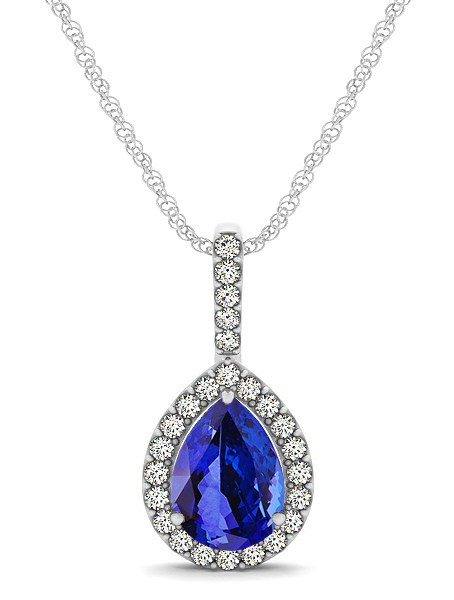
Topaz
November Birthstone, 4th Anniversary
Topaz is a gemstone available in a rich rainbow of colors. Prized for several thousand years in antiquity, all yellow gems in antiquity were called topaz. Often confused with citrine quartz (yellow) and smoky quartz (brown), quartz and topaz are separate and unrelated mineral species. The most prized color of topaz is called Imperial topaz after the Russian Czars of the 1800s and features a magnificent orange body color with pinkish undertones. Topaz also comes in yellow, pink, purple, orange, and the many popular blue tones. Topaz is found in Brazil, Mexico, Sri Lanka, Africa and China. Topaz is a very hard gemstone, with a Mohs hardness of 8, but it can be split with a single sharp blow, a trait it shares with diamond. As a result it should be protected from hard knocks. Clean with mild dish soap; use a toothbrush to scrub behind the stone where dust can collect. Your AGTA jeweler will tell you how to best care for your topaz.
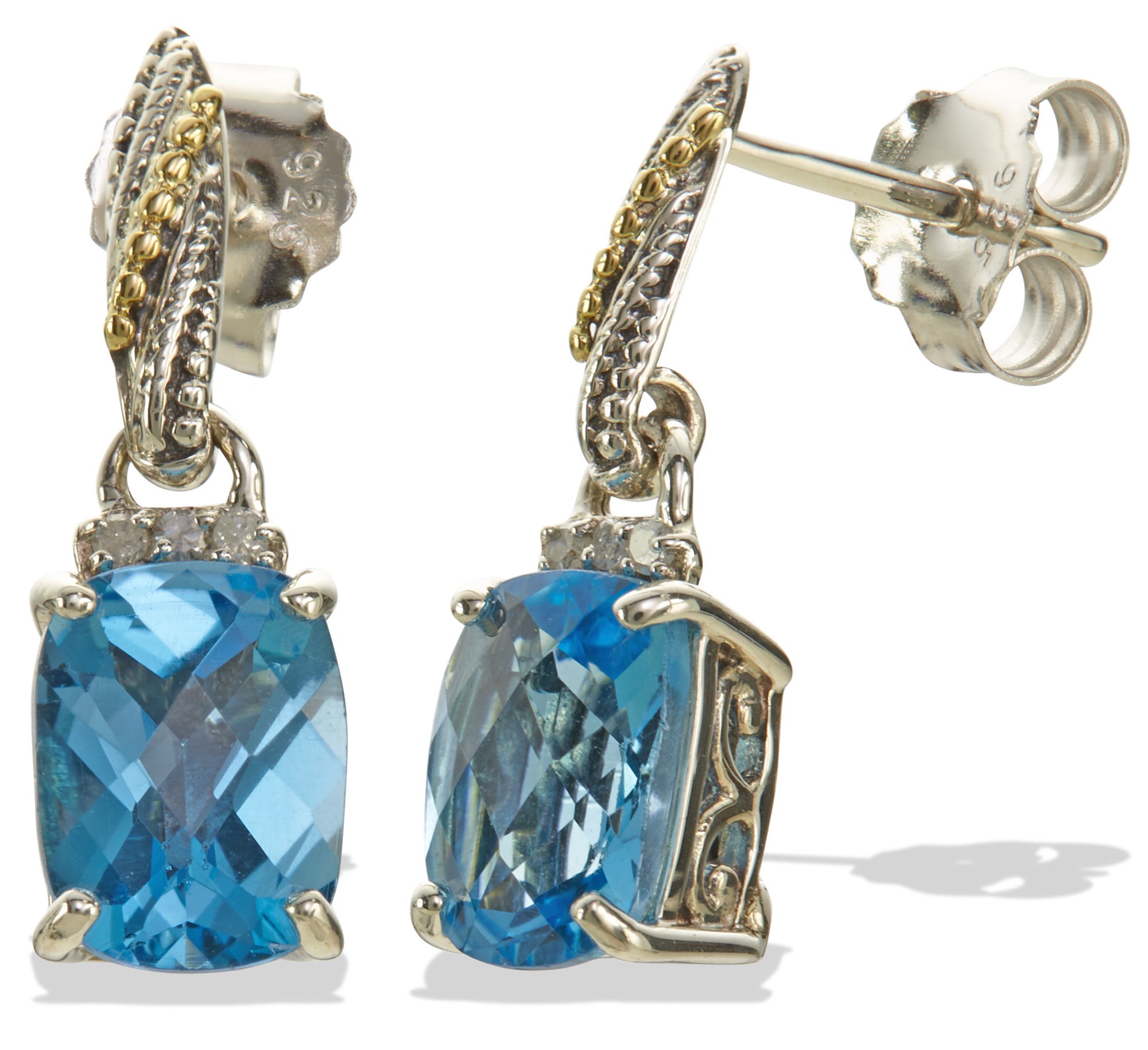
Tourmaline
October Birthstone, 8th Anniversary
Tourmaline has become a favorite gemstone among jewelry designer, and gem collectors the world over. Since it is available in a wide variety of colors, it is ideally suited to almost anyone's taste. Tourmaline also is known for displaying several colors in the same gemstone. These bi-color or tri-color gems are formed in many combinations; gemstones with clear color distinctions are highly prized. One multi-color variety is known as watermelon tourmaline, and features green, pink, and white colors bands; to resemble its namesake, the gemstone is cut into thin slices having a pink center, white ring, and green edge. Tourmaline is found in many localities including Brazil, Afghanistan, East Africa, and the USA. Some tourmalines are heated or irradiated to bring out their best color. Some treated tourmalines may fade if exposed to high heat or very prolonged exposure to intense light. Tourmaline is a hard gemstone that is resistant to both scratching and breaking, but it should be protected from sharp blows or sudden changes in temperature. Because of the natural internal characteristics found in some tourmalines, especially pinks and reds, ultrasonic cleaning machines should not be used. Tourmaline can be cleaned with most any commercial jewelry cleaner or mild soap and lukewarm water using a soft brush.
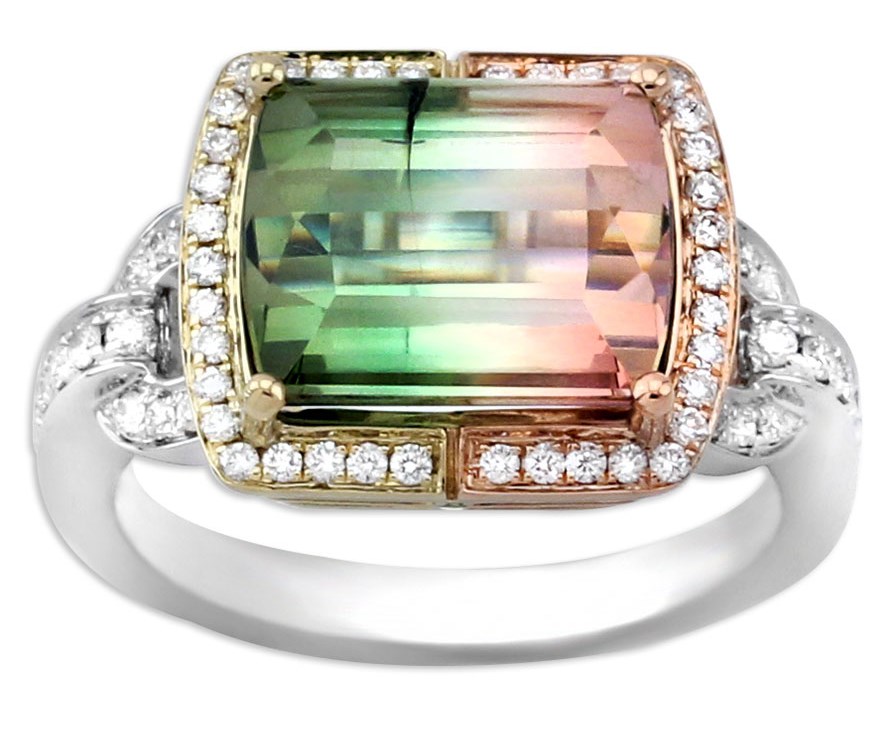
Turquoise
December Birthstone, 11th Anniversary
The name turquoise, from the French expression Pierre tourques or Turkish stone, originated in the thirteenth century and describes one of the oldest known gemstones. Turquoise varies in color from greenish blue, through robin's egg-blue, to sky blue shades and its transparency ranges from translucent to opaque. Turquoise is plentiful and is available in a wide range of sizes. It is most often used for beads, cabochons, carvings, and inlays. Although its popularity fluctuates in fashion, it is a perennial favorite in the American Southwest.
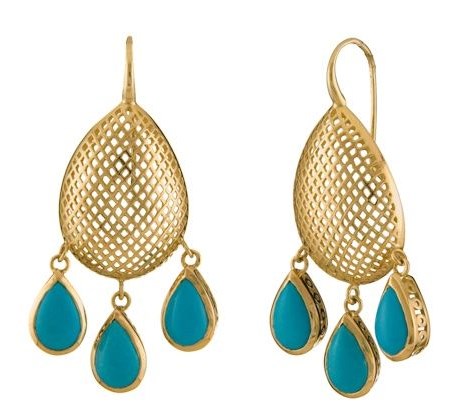
Zircon
December Birthstone
Derived from the Arabic words zar and gun, meaning gold and color, zircon is found in a wide range of colors such as: blue, yellow, orange, brown, green, colorless, and red (the most prized color). For many years colorless zircon was used to imitate diamonds. Folk wisdom grants zircon the power to relieve pain, whet the appetite, protect travelers from disease and injury, to ensure a warm welcome, and to prevent nightmares guaranteeing a deep, tranquil sleep. Major sources of zircon are the Chanthaburi area of Thailand, the Palin area of Cambodia, and the southern part of Vietnam. Zircon jewelry should be stored carefully because although this ancient gem is hard, facets can abrade and chip. Clean with mild dish soap: use a toothbrush to scrub behind the stone where dust can collect.
